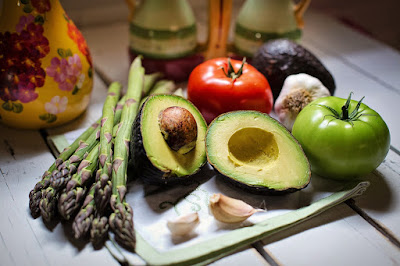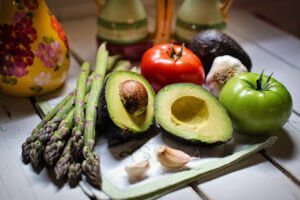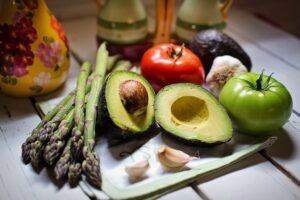9 Jan, 2024 | Muhammad Aleem | No Comments
“Discover Cardoons: The Culinary Hidden Gem You Need to Try!”

The Culinary Hidden Gem You Need to Try!”
Cardoons, often described as a culinary hidden gem, are a vegetable that may not be as familiar to many as other garden vegetables. Yet, they have a long history, particularly in Mediterranean cuisine, and offer a unique taste and impressive nutritional profile. In this comprehensive blog, we will delve into the world of cardoons, exploring their origins, culinary uses, nutritional benefits, and even share some delicious recipes to help you incorporate them into your diet. Join us as we uncover the secrets of this distinctive and nutrient-rich vegetable.

1. The Fascinating History of Cardoons
Cardoons, scientifically known as Cynara cardunculus, belong to the same family as artichokes and are native to the Mediterranean region. They have been cultivated for centuries, dating back to ancient Greece and Rome. Cardoons were a popular vegetable in European gardens and kitchens during the Renaissance and have maintained their culinary presence in various regions ever since.
2. The Unique Appearance of Cardoons
Cardoons have a unique appearance that sets them apart from other vegetables. They look like oversized celery with broad, serrated leaves and thick, celery-like stalks. The stalks are the edible part of the plant and are the focus of their culinary use.3. Culinary Uses of Cardoons
While cardoons are not as commonly used as some other vegetables, they have a delightful flavor and a tender, creamy texture when cooked. Here are some popular culinary uses:
• Braised Cardoons: Cardoons can be braised in a flavorful broth until they become tender, creating a delicious and hearty side dish.
• Cardoon Gratin: Similar to scalloped potatoes, cardoon gratin is a dish where sliced cardoons are layered with cheese and baked until golden and bubbling.
• Cardoon Soup: Pureed cardoons can be used to make a creamy soup, often garnished with a drizzle of olive oil or a sprinkle of fresh herbs.
• Cardoon Fritters: Sliced and battered cardoons can be deep-fried to create crispy and savory fritters.
4. Nutritional Benefits of Cardoons
Cardoons offer a range of nutritional benefits, making them a valuable addition to your diet:
• Low in Calories: Cardoons are low in calories, making them a great choice for those watching their calorie intake.
• Rich in Fiber: They are a good source of dietary fiber, which supports digestive health and helps maintain a feeling of fullness.
• Vitamins: Cardoons contain vitamins such as vitamin K, which is essential for blood clotting and bone health, and vitamin C, which supports the immune system.
• Minerals: They provide minerals like potassium, which helps regulate blood pressure, and magnesium, necessary for various bodily functions.
• Antioxidants: Cardoons contain antioxidants, including quercetin and apigenin, which help protect cells from oxidative damage.
 5. Health Benefits of Cardoons
5. Health Benefits of CardoonsIncorporating cardoons into your diet can offer several health benefits:
• Digestive Health: The fiber in cardoons promotes healthy digestion and regular bowel movements.
• Weight Management: The fiber content also aids in weight management by promoting a feeling of fullness and reducing calorie intake.
• Heart Health: Potassium-rich cardoons contribute to heart health by helping to regulate blood pressure.
• Bone Health: The vitamin K and calcium in cardoons support bone health and help maintain strong bones.
• Antioxidant Protection: Antioxidants in cardoons help protect cells from oxidative stress and may reduce the risk of chronic diseases.
6. Delicious Cardoon Recipes
Here are some delightful cardoon recipes to inspire you to give this unique vegetable a try:
• Braised Cardoons: Braised cardoons with garlic, olive oil, and a sprinkle of Parmesan cheese make a savory and satisfying side dish.
• Cardoon Gratin: Layer sliced cardoons with bechamel sauce and Gruyere cheese, then bake until golden and bubbling for a decadent gratin.
• Cardoon Soup: Puree cooked cardoons with vegetable broth, onions, and garlic, then garnish with a drizzle of olive oil and fresh parsley.
• Cardoon Fritters: Slice cardoons, dip them in a simple batter, and deep-fry until golden and crispy.
7. Conclusion
In conclusion, cardoons are a unique and nutrient-rich vegetable that deserves more recognition in the culinary world. With their long history, delightful flavor, and impressive nutritional profile, they have the potential to elevate your culinary creations and contribute to your overall well-being.
Whether you enjoy them braised, baked, pureed, or deep-fried, cardoons offer a distinctive and satisfying dining experience. Their potential contributions to digestive health, weight management, heart health, bone health, and antioxidant protection make them an excellent addition to a balanced diet.
So, the next time you come across these intriguing vegetables at the market or consider growing them in your garden, embrace the opportunity to explore their culinary potential. As you delve into the world of cardoons, you’ll discover their ability to add flavor, nutrition, and uniqueness to your meals, enhancing your culinary adventures and delighting your taste buds
Thanks for your visisit…. Next… top 05 disease in the US
My Sports blog for you… The soccer world
Write Reviews
Leave a Comment
No Comments & Reviews